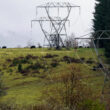Competition isn’t always fun when you’re a business, but it certainly can improve services and products if you face up to the challenge.
That’s what we saw last weekend at the Oregon Jamboree: a festival that was bigger, and very possibly better than ever.
The Jamboree has seen some hard times. The festival’s costs have escalated in response to the general inflation of country music artists’ fees and local competition, which has driven what the Jamboree has to pay for talent even higher – because performers looking to fill out their traveling schedules can play the field, so to speak, with three carbon-copy festivals operating in western Oregon this year during a two-week span.
That’s forced Jamboree organizers to get creative, and they have – coming up with innovations such as emphasizing the cleanliness of their venue (green grass versus dry, dusty fields and dirt roads), the availability of shade in Sankey Park (tall trees versus blazing sun in those dusty fields), the amenities of the park and Weddle Bridge for children’s activities and general relaxation, and the stage in Sankey Park that has provided a near-constant stream of entertainment from up-and-coming artists who get a chance to play for fans who want more music.
The Jamboree has also employed themes (“The Big 22” this year) and aggressive, innovative use of social media to connect with its patrons and the country music fan base.
For this one, though, planners really got creative in a physical sense, coming up with a new way to lay out the Jamboree grounds at Sweet Home High School to create space for at least 3,000 more people – ticket sales.
It was pretty obvious that there were more people in town last week, judging by the vehicle and pedestrian traffic, the happy vendors and storekeepers who told us they did pretty well, and the hard ticket sales numbers.
The last several years have been tough for the Jamboree, but we can clearly see that “we-can-do-it” Sweet Home spirit, which characterizes so much of what happens in this town.
More challenges, no doubt, await down the road. But we’ve still got a good thing going here and even if it means dealing with some attendant challenges such as traffic, noise, folks who’ve consumed too much hooch, neighborhood street closures and long lines at the gas station and grocery store, we need to remember that each of those vehicles rolling into town represents hundreds of dollars flowing into the Sweet Home economy.
Local entrepreneurs continue to take advantage of the opportunities, offering parking, snacks, etc. to raise money for causes ranging from the Sweet Home Swim Club to church programs.
The challenge will be figuring out how to keep the Jamboree an event that attracts a crowd.
Although there are always a few complaints from disgruntled fans about being told to cut down on the sign-waving or the fact that someone around them was being obnoxious, the fact is, the majority left happy.
We were impressed by the visibility and commitment of Sweet Home Economic Development Group (SHEDG) Board members. In particular, Vice Chair Kellie Kem stood out on the main concourse for over an hour Sunday evening, personally greeting and chatting with exiting patrons, some of whom told her very firmly that they were coming back.
When they do, for the 23rd Jamboree, it will be another opportunity for Sweet Home.




